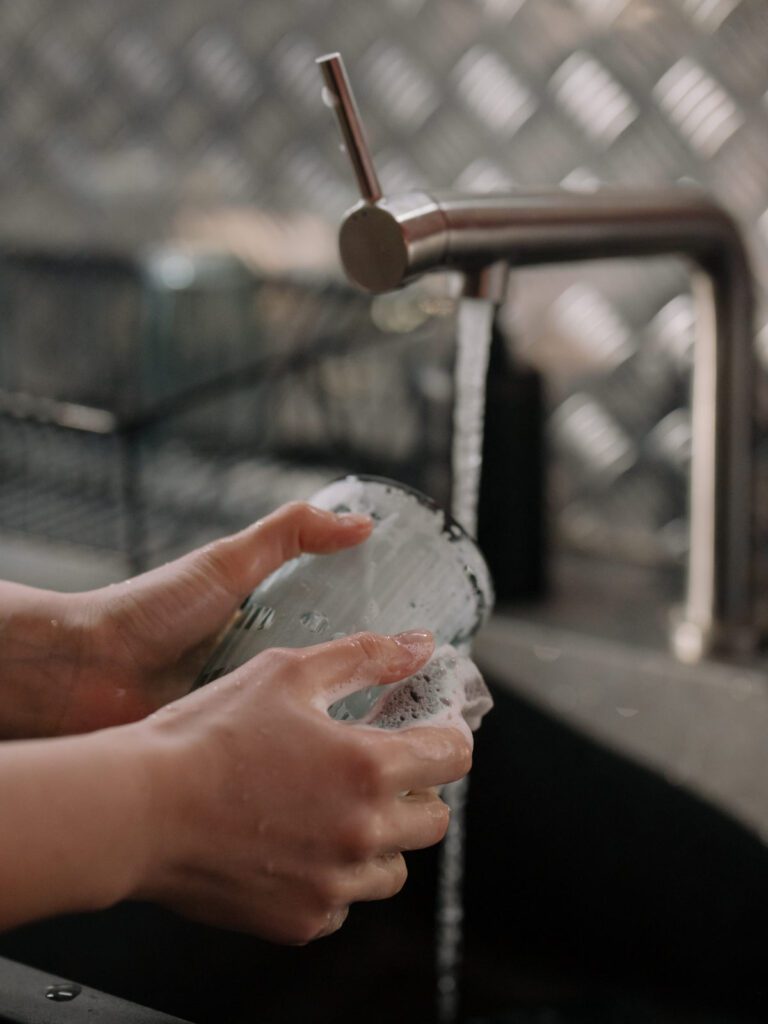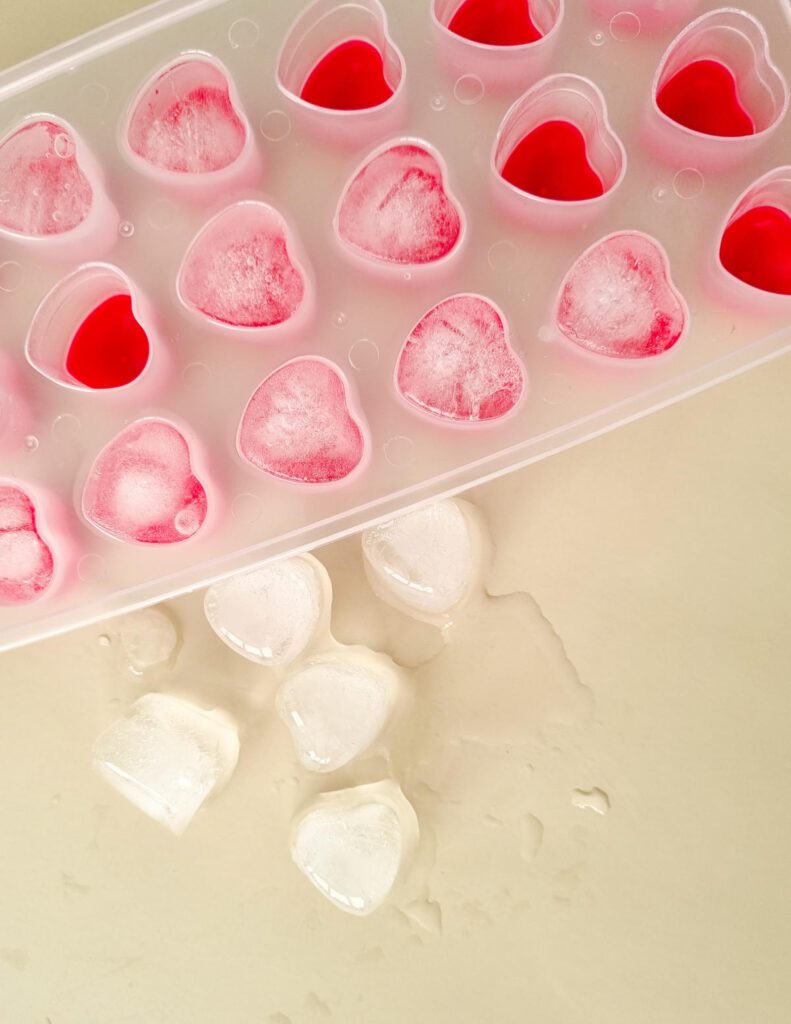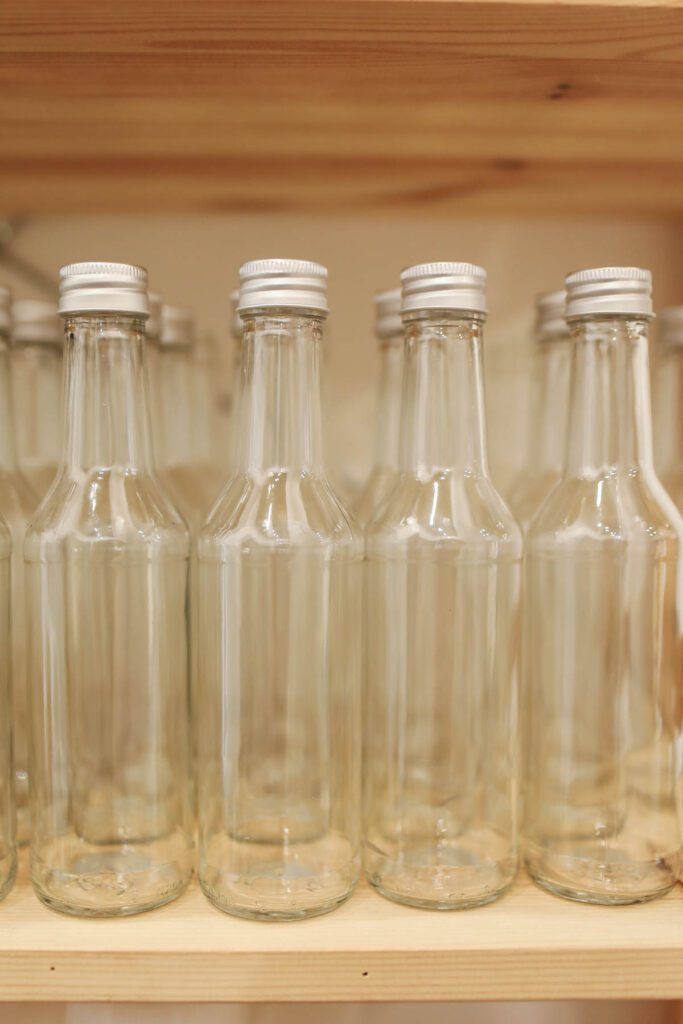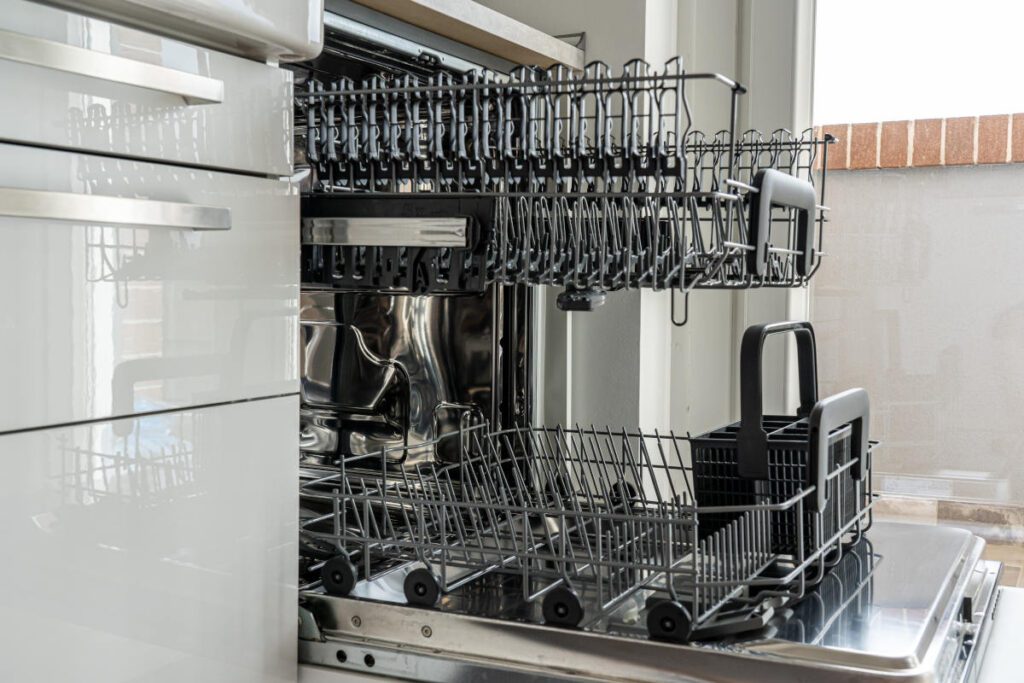Cleaning containers for preserving food is an important step to ensure maximum hygiene and safety. Whether you’re just starting or experienced in food preservation, knowing how to wash and clean containers properly will pay off in the long run. It is disappointing to create a delicious jam or pickle only to find that your preserves are spoiled due to inadequate cleaning of storage jars.

From a food hygiene perspective, cleaning the container ensures all dirt and debris are removed before being filled with products. Proper washing is also the first step in reducing any microorganisms that could cause spoilage. Therefore, from both a taste and safety standpoint, taking the extra effort to ensure all jars and bottles are adequately cleaned is well worth it. Preserving begins with proper container cleaning and then sterilising!
Storage containers for preserves
The options available when it comes to storing preserves are nearly unlimited. Rigid containers, such as jars, canning jars, or clip-top jars and bottles are best for storage. This is because they provide a secure seal and can withstand pressure if boiling water is used in the process.
Freezer-safe containers are another excellent option for storing food preserves. To ensure your preserves stay in perfect condition, it is important to properly clean and prepare these containers before use.
Be aware that freezer-safe containers should never be used to store boiling liquids unless confirmed by the manufacturer. This is because it could cause them to crack or leak. If used to freeze food, it is recommended that you fill the container halfway and leave some space on top for expansion.

Ice-cube trays can also be good options for storing items like jams, sauces, pesto and other soft foods. To ensure these foods do not become contaminated, it’s important to properly clean the ice-cube tray before use in this way. Be sure to leave some space on top for expansion when freezing.
Ultimately, choosing an appropriate container that suits your purpose is key for the successful preservation of your favourite foods!
Assess jars, bottles and lids
Every time we reuse food containers, it is important to check that they are clean and intact. Damaged and misshapen lids should be discarded and replaced.
This step should also include looking out for any foreign bodies such as pieces of glass or plastic, nicks or cracks which may have appeared over time.
Taking the right steps when washing food containers ensures suitability for use in storing preserves and maintaining high standards of food hygiene.
TIPS for removing old labels
Removing labels from cleaning containers such as jars and bottles before washing is helpful and practical. Doing so also gives the cleaning process a much better chance of delivering impressive results.
- To make removing labels easier, begin by soaking the container in warm water for several minutes. The heat should cause the adhesive on some labels to loosen, allowing you to peel it off with ease.
- If any residue remains, wipe it away with a combination of vinegar and water. You can also try some baking soda if stubborn glue remains, before cleaning like normal.
Simple steps like this can make all the difference in the cleaning process and how your jars look!
Clean new jars and bottles too!
While cleaning containers may seem straightforward, failing to properly clean both new and reusable jars and bottles can jeopardize your efforts.

Washing new jars and bottles before filling them with preserves is an important step to ensure the safe storage and preservation of your food. Dirt, chemicals and other contaminants be present in these containers. Also, bacteria left over from the manufacturing process or factory packaging could remain.
By washing new jars and bottles before filling them, you can protect your preserves from potential contamination!
A General Guide for Cleaning jars, bottles and lids
Washing:
1. Gather the supplies you will need: dish soap, a sponge or brush for scrubbing, distilled white vinegar and warm water.
2. Rinse the containers with hot water to remove any dust or dirt particles that may be present.
3. Make a cleaning solution by combining equal parts of dish soap with distilled white vinegar in a bowl filled with warm water.
4. Dip your sponge into the cleaning solution and begin scrubbing away any residue inside and outside of each container until they become clean and free from all debris.
5. For heavily soiled jars, soak them overnight in the cleaning solution before scrubbing again until they are spotless inside and out.
Rinsing:
6. Thoroughly rinse off each container by immersing them in cold running water for at least 1 minute to ensure all traces of soap have been removed from their surfaces.
7. Allow containers to air dry completely before storing them away or sterilising them ahead of filling them with food or liquids.
8. Furthermore, never use bleach or other harsh chemicals to clean containers as these can leave behind toxic residues.
9. Lastly, always check the manufacturer’s cleaning instructions before beginning any cleaning process and make sure to follow all safety guidelines included in the instructions. This is especially important when you are starting to use new types of containers e.g. fridge and/or freezer-safe containers. Certain containers and lids are not suitable for being placed in the dishwasher.
By following these steps for cleaning your jars and bottles properly, you can be assured that they are safe and hygienic for preserving foods and liquids.
Dishwasher cleaning of jars and bottles
Preparing and cleaning containers for preserving food is an important step for ensuring food hygiene, so using the dishwasher really can help.

- To begin, scrape out any remaining solids from the bottles or jars and rinse with warm water.
- Make sure you get rid of any labels too, since these can leave a residue when heated in the dishwasher, and the labels can clog the dishwasher.
- Then, place your jars or bottles upside down on the top rack of the dishwasher before washing on a normal cycle – no need to use additional cleaning products either.
When they’re done, your containers should be spotlessly clean and ready to use.
So, now you know about the importance of making sure that all of your containers and lids are clean before any anticipated food storage. This will help ensure that your food is safe to eat and free of any harmful organisms and chemicals. While it may seem like an onerous step, taking the time to wash and clean your containers and lids properly will pay off in the end. So be sure to practice proper hygiene rules when preparing to make preserves at home. For your health and enjoyment and that of your loved ones.